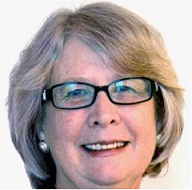Blog
Unless otherwise stated, content is shared under CC-BY-NC Licence
Instaforever: a digital preservation perspective on social media
At first glance, the terms ‘social media’ and ‘long-term preservation’ do not seem to belong in the same sentence. The two terms are perhaps even incompatible, mutually exclusive, and contradictory.
Obsolescence 2.0 Digital Preservation by people, for people
On Sale at All Good Pharmacies: Eternal Life
There’s a paradox that links digital preservation with medicine. Digital preservation systems are subject to the same obsolescence that they exist to guard against: and even great doctors catch colds. I believe my doctor is mortal but that doesn’t mean I reject her advice. Her advice is not intrinsically dependent on her own experience but is situated within a global, dynamic community of research and practice. The medical profession deals with the problem of its own mortality by shifting the locus of their competence from the specific to the general. So, if mortality is to medicine what obsolescence is to digital preservation, and if really great doctors don’t have to prove themselves by living forever, what about digital preservation tools? What should we do about the problem of obsolescence? Should truly great digital preservation systems demonstrate their worth by living forever? What is the locus of their competence?
Quantitative File Formats for Preservation
Last month I emailed William Kilbride at DPC with a query about file formats for quantitative data for long term preservation and, as a result of that email and the ensuing conversation, I appear to have agreed to write a blog post about the topic. Here is that blog post.
With luck, it’s a swinging door
In his most recent blog post, William Kilbride reminded us that we in the digital preservation community “cannot make the case [for preservation] on our own terms. We need to make the case in terms that our audience understand” so that “preservation becomes an intrinsically achievable goal from the outset, not something we need to tack on at the end.”
Losing all hope to find freedom: Fail Club is here to help
Well, with any luck things aren’t so bad that all hope is lost. But freedom, or at least enlightenment, may well be on the horizon!

What do you mean it's not supposed to look like that?!
(Image courtesy of glennbphoto, The Atlas of Digital Damages)
Last summer, beneath the lofty cathedral-esque ceiling of York’s Guildhall, a group of troubled digital preservationists held their heads in their hands.
‘If only there was a way we could talk openly about our workflow woes,’ they cried.
‘It would make the task seem so much easier if I could just share what’s going wrong with someone who understands what I am going through,’ they confessed.
Beware of the Leopard! Oxford’s adventures in the bottom drawer
The Bodleian Libraries have partnered with Cambridge University Library on a two-year collaborative project: Digital Preservation at Oxford and Cambridge (DPOC). Funded by the Polonsky Foundation, the project is researching and developing requirements for each library’s digital preservation programmes. Both libraries have appointed three Polonsky Fellows each, specialising in the following areas: Policy and Planning, Outreach and Training, and Technology.
Chippy campaigning: how the DPC likes to spend its ‘spare’ time
November 2016 saw the culmination of possibly the most exciting Digital Preservation Awards EVER! Well, it was for me anyway. Here’s why: we attracted more nominations than ever before – more than 30 from around the world and many from outside the Coalition too, we were able to offer more categories than ever before including a long overdue celebration of the work of our colleagues in commercial organisations and industry, the event was live streamed enabling another 300 people to watch on the night and after the event, #DPA2016 trended in the top 6 UK hashtags that evening (my personal highlight) AND everyone had a great time!
A foot in the door is worth two on the desk
Shibboleth
I am asked, from time to time, how to persuade management that digital preservation matters. It’s a puzzling question in context and content. For a start, I am not sure I have ever persuaded anyone of anything. I have been on hand when people persuaded themselves but that’s not the same thing. It’s like finding the fire brigade at the scene of every major fire and assuming they are to blame. Moreover, I am not sure it’s possible to offer a global shibboleth for digital preservation that will work for all time zones and all sectors. I’m not saying it’s not possible to make the case but, in this particular conversation contexts matter. A lot of local truths don’t make a universal one.
Building our community across borders – or just, ‘the way we do things.’
Last year, just 9 months ago in fact, the DPC declared itself open for international membership – that is to say members based outside the UK and Ireland, where we have our roots. In the months that have passed, we’ve seen six new members… including additions from Canada (official announcement coming later today!), Switzerland, the Netherlands and the US.
The Trials of Sisyphus
Working in the British Museum and moving towards adopting a more fully integrated approach to digital asset management and preservation is a richly rewarding and challenging endeavor. The scale of the challenge is however significant. To illustrate this and highlight the increased order of magnitude of the demands placed on the organisation, I can let you know that one smaller department for example within our organization annually creates upwards of 60,000 digital documents. This is one department in over thirty.
















































































































































